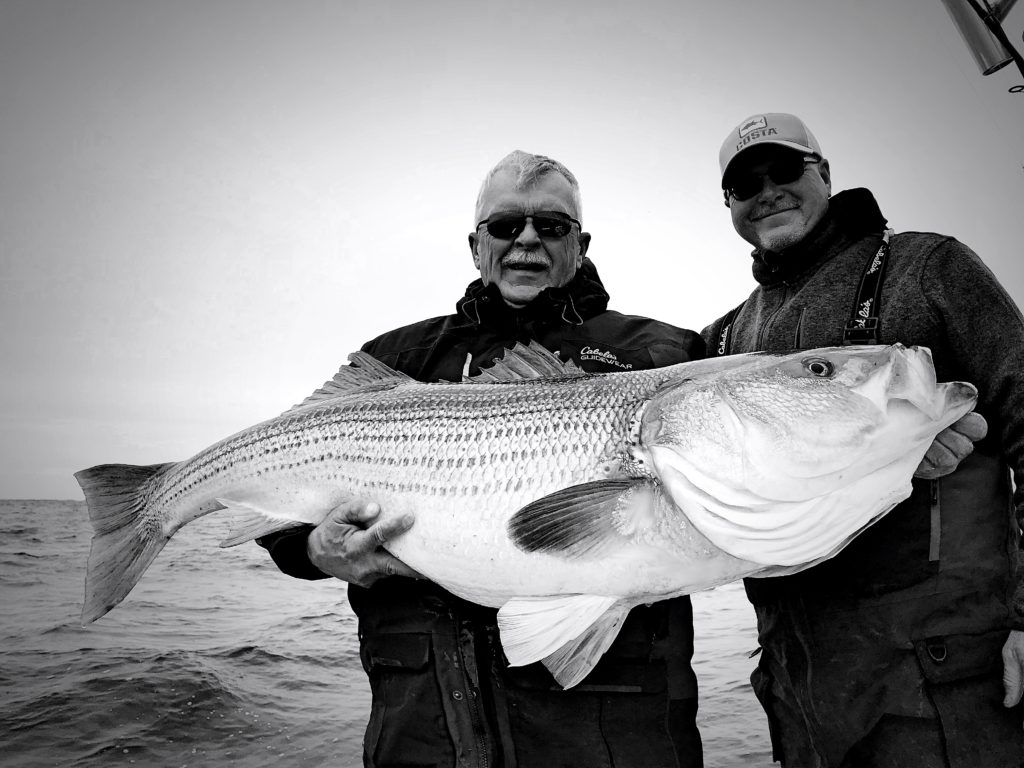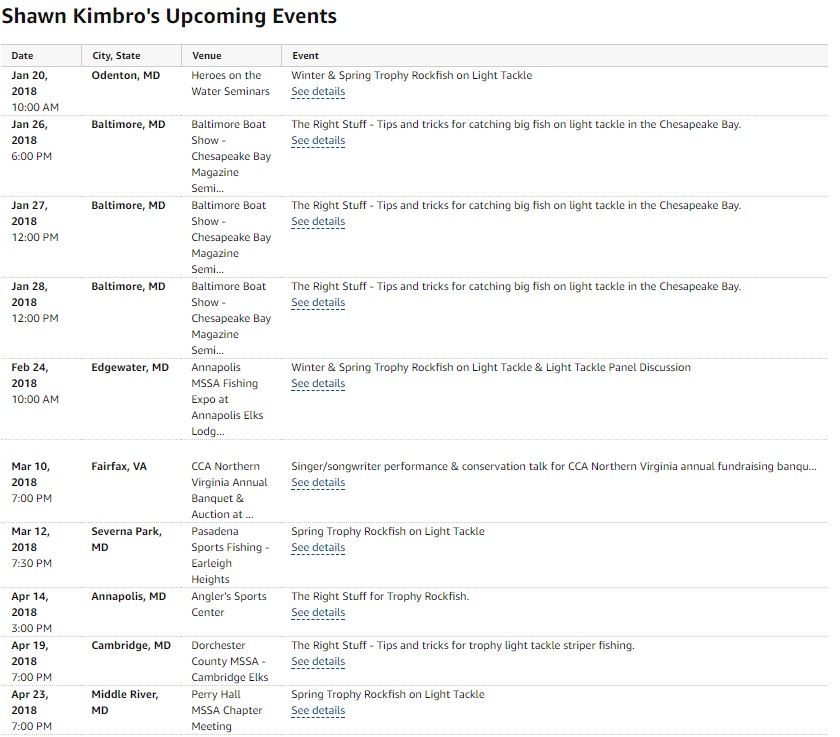light tackle
Like it or not, we live in an age of short attention spans. How many times have you started into a video or blog post that sounded interesting, only to abandon it after the first few seconds because it was just too long and drawn out? I have to admit that, before I open any video on social media, I look to see how much of a time investment I’ll need to make. It’s especially true with instructional videos. When I turn to YouTube or Facebook to find out how something works, I want to see content that is quick and to the point.
That’s why I’m introducing my new short video series, The Chesapeake Minute. It’s a series of instructional vignettes about light tackle fishing that get right to the point. Most entries will be 60 seconds or less and I’ll never go over two minutes. Look for entries about angling techniques, lure selections, gear choices, hot locations, fishing reports, and other light tackle related advice designed to help you quickly maximize your success on the water.
Most of the videos will be season specific, but I’ll also throw out some tips that work any time of year. I pledge at least 36 episodes in 2020 and there will likely be many more. A new entry will drop every Thursday afternoon at 3:00 PM with bonus editions coming out at other times through the week.
I’ll announce some of the entries on social media, but you can follow my YouTube Channel to make sure you don’t miss an episode. The Chesapeake Minute Playlist is fully indexed and searchable so you can easily find any subject you’re interested in. They’ll be easy to find on YouTube Search and Google Search as well. Just type my name and the fishing subject in the search box.
A few videos are already live and look for more over the next couple of weeks since my goal at first is to cover most of the light tackle fishing basics. I’m also open for suggestions, so fire away. I’ll still post some full-length videos from time to time, but I hope you’ll push the PLAY button and give my new series a look. It only takes a minute!
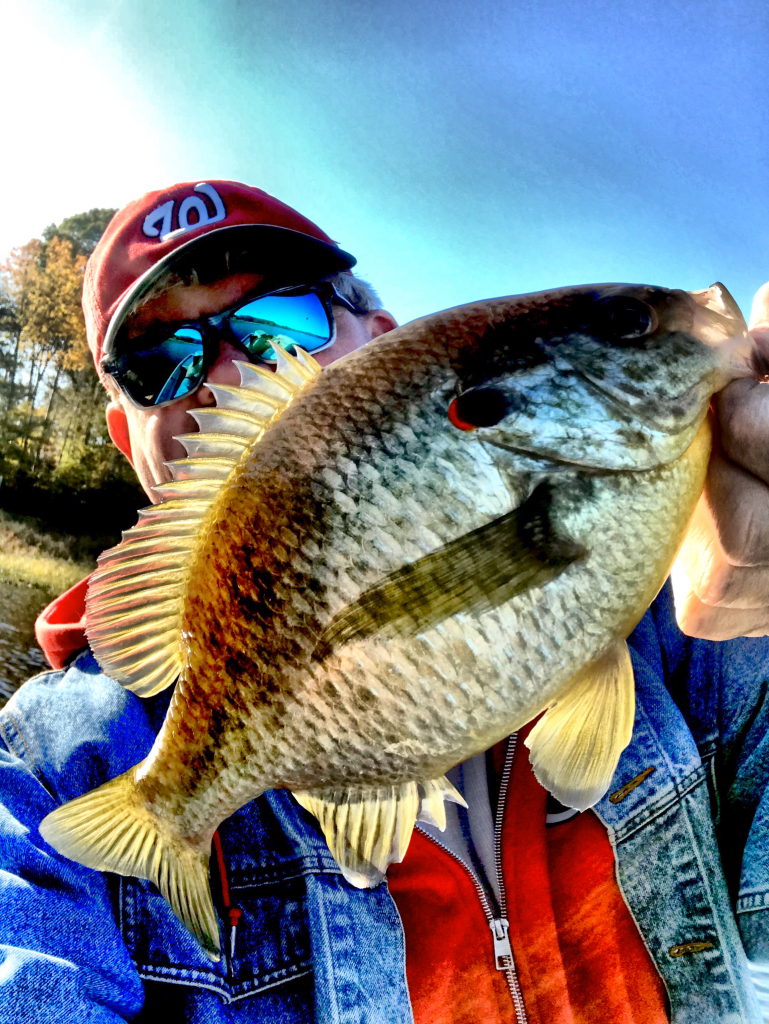
If you do a keyword search for “invasive species” on any Chesapeake Bay-centered social media platform, you’ll most likely see more than you want to know about northern snakeheads. But, there are lesser-known invasives in the Chesapeake watershed, some that aren’t considered harmful and that are even stocked by our state natural resource agencies. I’ll leave it up to the experts to decide when it’s alright to promote a new species or when it’s better to eradicate one, but I can tell you for certain that I’m tickled pink about the rise of the redear sunfish.
Redear sunfish (Lepomis microlophus), also known as shellcrackers, are one of my all-time favorite fish. Some of my fondest fishing memories are of catching burlap sacks full of shellcrackers with my brothers and our father. Originally considered a strictly southern species, they’ve been helped along by selective stocking while naturally expanding their range north. In 1938, they were reported to be no farther north than Georgia but by 2011, they had made their way up to the Potomac River tributaries. In the past five years, I’ve caught them in many Eastern Shore tidal streams and in every DNR-managed lake that I’ve fished. Shellcrackers do great in this area because of their high tolerance for salinity and their taste for small snails and other mollusks. Today, the shellcracker populations in our tidal streams and millponds are booming.
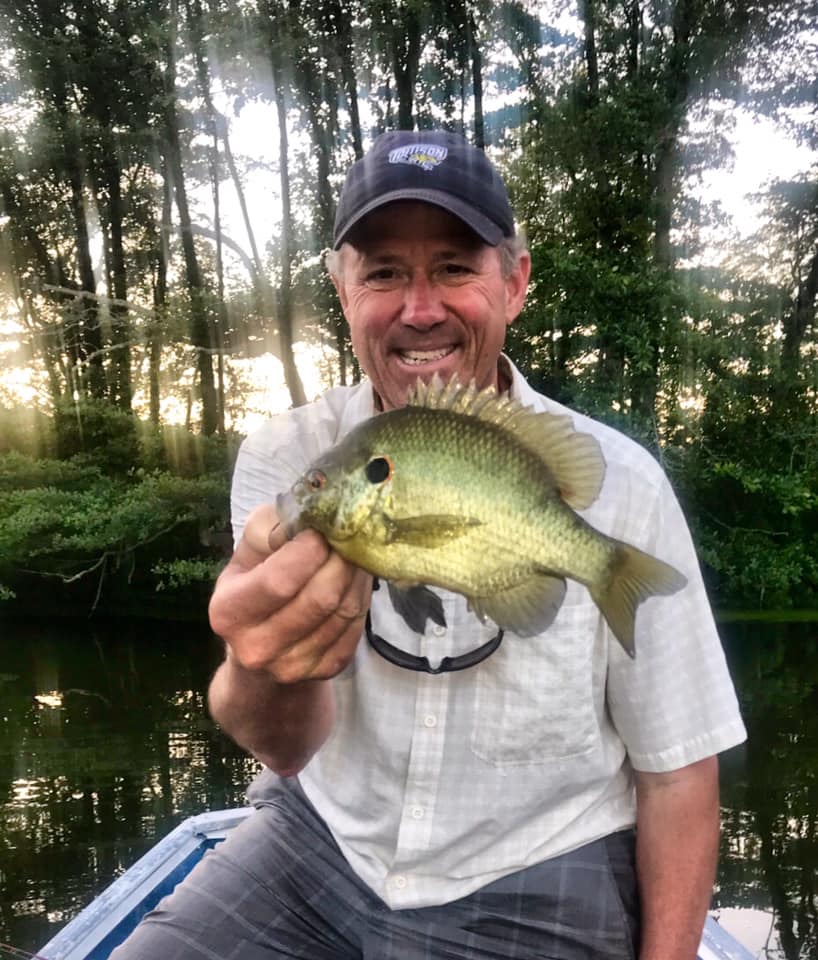
Read More!
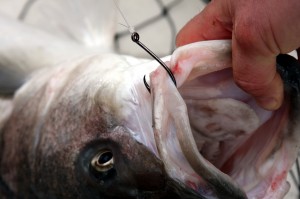 UPDATE: This post appeared earlier on ChesapeakeLightTackle.com. It has been reprinted due to recent proposals to require circle hooks year-round for bait fishing in Maryland.
UPDATE: This post appeared earlier on ChesapeakeLightTackle.com. It has been reprinted due to recent proposals to require circle hooks year-round for bait fishing in Maryland.
It’s spring in the Chesapeake Bay and time for big migratory stripers. Some of the biggest striped bass in the world are caught in Maryland in the early spring. A few fishermen are already using circle hooks to catch & release big fish on the points near the rivers using bait such as bloodworms and cut menhaden. Circle hooks aren’t just a good idea for bait fishing in the Chesapeake Bay, they’re required by law. Maryland fishermen have been slow to see the advantages of circle hooks. I think that’s because most of us haven’t used them enough, but there’s also confusion about what circle hooks are and how they work. I recently had an opportunity to travel to Providence, Rhode Island to attend a FishSmart conference sponsored by NOAA about catch & release techniques. I came away with some interesting information.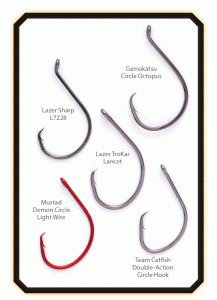
According to extension agents working with Florida Sea Grant, circle hooks have been used for decades in their state by both recreational and commercial fishermen who appreciate their ability to efficiently catch fish. The principle behind the hook is simple. After the hook has been swallowed, the fisherman applies pressure to the line, pulling the hook out of the stomach. The unique hook shape causes the hook to slide towards the point of resistance and embed itself in the jaw or in the corner of the fish’s mouth. The actual curved shape of the hook is intended to keep the hook from catching in the gut cavity or throat.
The advantage to the fisherman is that hooking is automatic. No hook set required. All we have to do is let the fish swim off with the bait then pick up the rod and start reeling. Circle hooks are a fool-proof way to catch stripers when fishing with bait, but do they work to protect the fish?
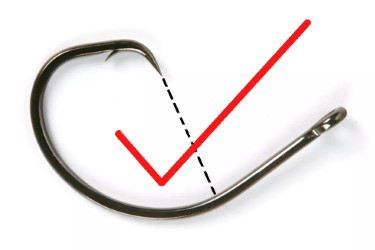 According to Maryland rockfish scientist Rudy Lukacovic, most of the time they do. Most fishermen will tell you that they still see gut-hooked fish occasionally. That’s one of the drawbacks to bait fishing, but there’s also another problem. There is unfortunately no industry standard as to what makes a circle hook. In fact, some of the hooks you buy off the bait shop shelf may not be circle hooks at all. Just because it says circle hook on the package doesn’t mean it is. There are impostors.
According to Maryland rockfish scientist Rudy Lukacovic, most of the time they do. Most fishermen will tell you that they still see gut-hooked fish occasionally. That’s one of the drawbacks to bait fishing, but there’s also another problem. There is unfortunately no industry standard as to what makes a circle hook. In fact, some of the hooks you buy off the bait shop shelf may not be circle hooks at all. Just because it says circle hook on the package doesn’t mean it is. There are impostors.
On a true circle hook, the tip of the hook points back toward the shank of the hook. If it points toward the eye, it’s not a circle hook no matter what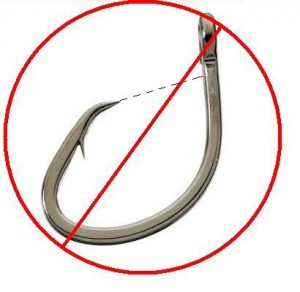 it says on the package. Confused? Then try this: Curve your index finger around the contour of the hook shank and press down a little. If you feel the tip of the hook pricking your finger, it’s not a true circle and won’t work right. The tip of the hook should curve away from your finger.
it says on the package. Confused? Then try this: Curve your index finger around the contour of the hook shank and press down a little. If you feel the tip of the hook pricking your finger, it’s not a true circle and won’t work right. The tip of the hook should curve away from your finger.
Circle hooks can be roughly divided into two types, offset and non-offset. The offset refers to the amount of deviation in the plane of the hook point relative to that of the shank. Most of the hooks you see on the store shelves are offset. That means when you lay them down on a table, they won’t lay completely flat. A true non-offset hook will lay perfectly flat on the table. Offset circle hooks are more likely to gut-hook your fish.
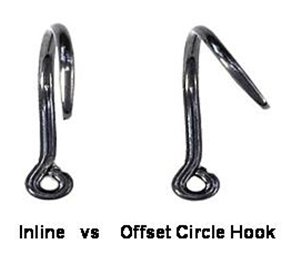 Since there can be confusion about what constitutes a true circle hook, some tournaments are specifying certain brands and types as tournament legal. Unless the industry responds by standardizing descriptions, state resource departments and lawmakers may also have to be more specific. Maryland defines a circle hook as: A non-offset hook with the point turned perpendicularly back to the shank. Circle hooks used in bait fisheries should be “non offset”. That is, if the hook is laid on a flat surface, all parts of the hook lie flat on the surface.
Since there can be confusion about what constitutes a true circle hook, some tournaments are specifying certain brands and types as tournament legal. Unless the industry responds by standardizing descriptions, state resource departments and lawmakers may also have to be more specific. Maryland defines a circle hook as: A non-offset hook with the point turned perpendicularly back to the shank. Circle hooks used in bait fisheries should be “non offset”. That is, if the hook is laid on a flat surface, all parts of the hook lie flat on the surface.
Here are some tips for using circle hooks to catch striped bass:
Keep it limber – Use a slow, limber fishing rod with a lot of bend in the tip. A stiff, fast-tipped rod is more likely to pull the hook out of the striper’s mouth when you pick it up. Ugly Stix fans, this is your cue!
Don’t bury the hook in the bait – If you hide the hook, it is less likely to catch the corner of the fish’s mouth when you start reeling. If you use live bait, hook the bait through the nose or lips so the hook is completely exposed and the gap isn’t blocked. Stripers won’t see the hook and your bait will look more natural.
Crank, don’t yank – Just set your reel to free spool, wait for the fish to take off and start reeling. If you’re live-lining, count to ten before you start. Don’t set the hook.
No need to sharpen – Sharpening a circle hook will damage the tip and make less likely to hook the mouth but more likely to hook the fish’s stomach.
Stay away from stainless – If a fish breaks off, the stainless hooks don’t rust. That means it will stay in the fish’s mouth longer. If a fish swallows a stainless hook, it will probably die.
Go big or go home – Don’t be afraid to use a big hook. A 8/0 or 9/0 hook is great for stripers. Take a look at the big rockfish in the picture below. It takes a wide-gap hook to get over those thick lips! Hooks with a gap that are too small are more likely to gut-hook the fish. For big fish in the 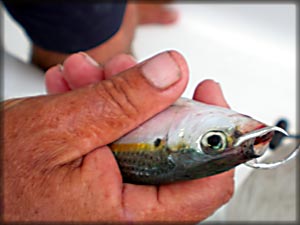 spring, use 10/0 or even bigger. Also, pay attention to the quality of the hook because you don’t want a hook that will bend or straighten.
spring, use 10/0 or even bigger. Also, pay attention to the quality of the hook because you don’t want a hook that will bend or straighten.
Catch & Release Tips
Be Prepared – If you aren’t used to using circle hooks, it might take a little longer to remove the hook from your fish. Keep your pliers, de-hooker, measuring device, and camera beside you and ready to use. If the fish swallows the hook, just cut the line as close as you can to the hook. Don’t try to pull the hook out if it’s embedded in the fish’s stomach.
Do you really need a net? – It’s a lot easier just to reach down and lip the fish with wet hands or wet rubber coated gloves. Nets cause you to lose fish and they injure them by removing slime. If you must use one, find one that has a fine, rubber coated mesh. You might even consider a a cradle net since that will let you measure your fish in the water.
Handle With Care – If you plan to release a big fish, be sure to support the body weight with both hands. If you have to lay it down to remove the hook, do it gently. Try not to drag the fish through the mud or sand because this can injure it and remove slime. Get the fish back in the water as fast as you can.
In a nutshell, circle hooks are good for the fish because fewer stripers are hooked in the stomach or in other vital organs, and they’re good for the fisherman because they increase hook-ups and reduce missed strikes. Good for the fish, good for the fisherman – that’s a winning combination.
Did you know? Circle hooks have been around for centuries. Archaeologists have recovered stone circle hooks that are tens of thousands of years old from the grave sites of indigenous cultures. J hooks came about relatively recently because they are easier to make. Once again, modern-day anglers are recognizing the benefits of circle hooks for both efficiency and conservation. This fishing technique, like the hooks themselves, has come full circle.
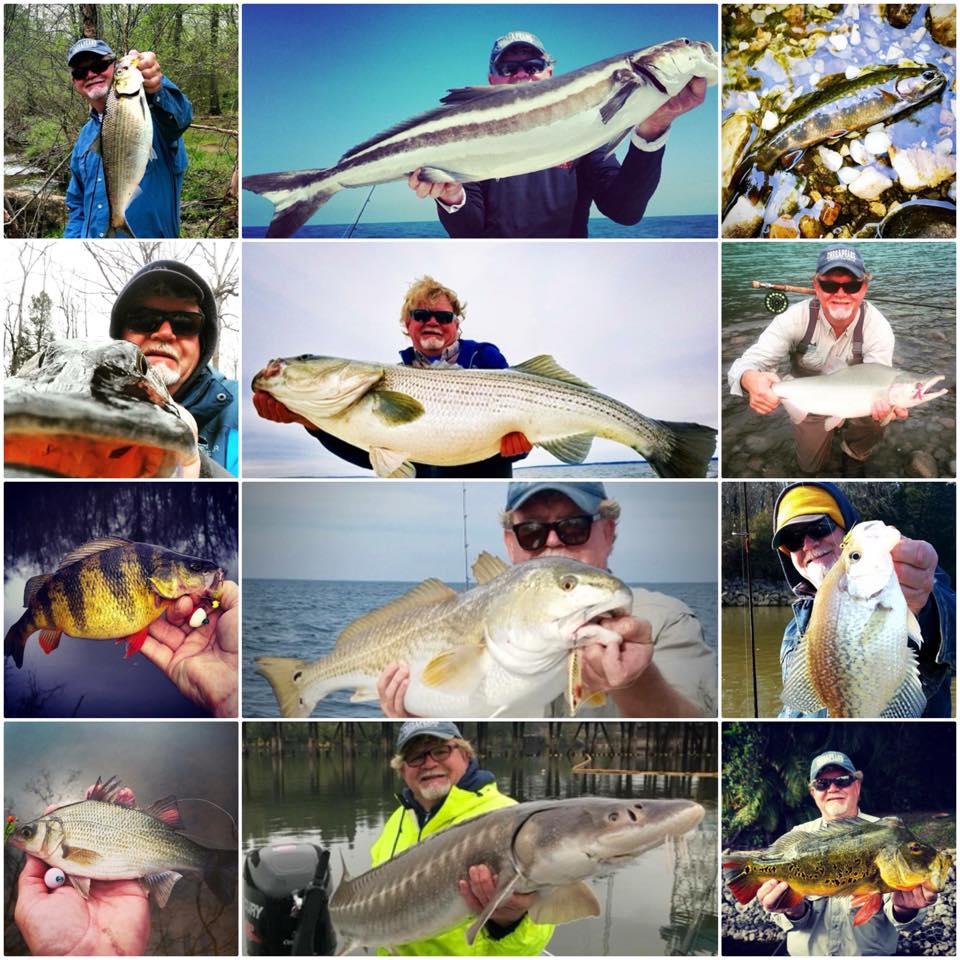 The arrival of a new year is a good time to reflect on the successes and failures of the old. Frankly, I’m happy to bid 2017 adieu and the optimist in me looks for a 2018 filled with many great opportunities. You might remember that I’ve predicted improvements for Chesapeake light tackle fishing over the last three years. Unfortunately, when it comes to rockfish, I’ve throttled back my optimism for 2018. With more and more people enjoying the art of light tackle casting, I think we’ll catch plenty of rockfish this year, but I don’t expect the vast numbers of mid-twenty to low-thirty inch fish like we’ve seen in the past. There just aren’t enough spawning class fish left to sustain the consistent reproduction we need to continue this good fishing. With that in mind, here are a few suggestions toward a satisfying year of Chesapeake Bay light tackle casting.
The arrival of a new year is a good time to reflect on the successes and failures of the old. Frankly, I’m happy to bid 2017 adieu and the optimist in me looks for a 2018 filled with many great opportunities. You might remember that I’ve predicted improvements for Chesapeake light tackle fishing over the last three years. Unfortunately, when it comes to rockfish, I’ve throttled back my optimism for 2018. With more and more people enjoying the art of light tackle casting, I think we’ll catch plenty of rockfish this year, but I don’t expect the vast numbers of mid-twenty to low-thirty inch fish like we’ve seen in the past. There just aren’t enough spawning class fish left to sustain the consistent reproduction we need to continue this good fishing. With that in mind, here are a few suggestions toward a satisfying year of Chesapeake Bay light tackle casting.
1. Diversify – Since we’ve had such successful striper fishing in the past, it’s tempting to focus on landing linesiders all year long. Instead, why not focus on some of the other challenging species that inhabit our beloved Chesapeake? During the winter months, there are pickerel, yellow perch, and crappie to be caught. Spring brings trophy stripers and also American and hickory shad. Summer is a great time to hit the tributary streams and backwaters for bass, trout, and snakeheads or we can stay in the Bay and look for redfish, bluefish, trout, and cobia. Fall brings more big rockfish and also slab-size crappie to the tributary streams. We all love stripers, but branching out and targeting other species will improve our skills and make us a better all-around fisherman.
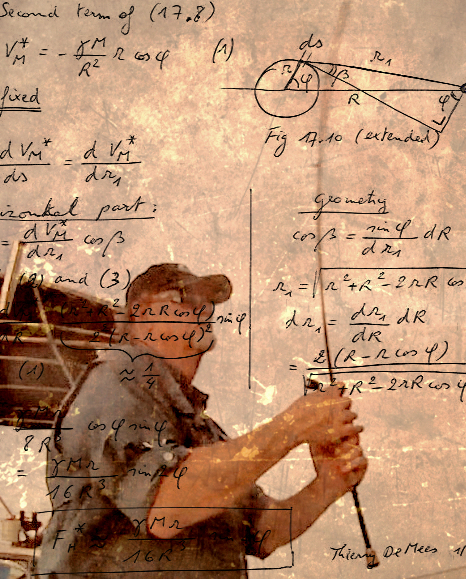 2. Try New Techniques – One of my goals at my talks and seminars this year is to encourage more anglers to try baitcasters. There are many advantages to using a baitcaster over a spinning reel for jigging stripers, the foremost two being increased leverage on the snap, and ease of resetting a lure to the desired depth. Sure, there’s a learning curve, and it takes some practice, but anyone can do it. By the same principle, try a fly rod once in a while. I don’t believe that a fly rod is the best tool for catching bigger rockfish in the Bay, but it’s certainly more challenging and frankly, it’s fun! When I’m fishing the freshwater streams, I almost always use a fly rod. A good place to get started with flycasting would be at Lefty Kreh’s Tiefest. Held this year in Annapolis over two days, Feb 24th & 25th, it’s a great place to learn, check out the latest gear, and watch some of the foremost artists in the country tie flies.
2. Try New Techniques – One of my goals at my talks and seminars this year is to encourage more anglers to try baitcasters. There are many advantages to using a baitcaster over a spinning reel for jigging stripers, the foremost two being increased leverage on the snap, and ease of resetting a lure to the desired depth. Sure, there’s a learning curve, and it takes some practice, but anyone can do it. By the same principle, try a fly rod once in a while. I don’t believe that a fly rod is the best tool for catching bigger rockfish in the Bay, but it’s certainly more challenging and frankly, it’s fun! When I’m fishing the freshwater streams, I almost always use a fly rod. A good place to get started with flycasting would be at Lefty Kreh’s Tiefest. Held this year in Annapolis over two days, Feb 24th & 25th, it’s a great place to learn, check out the latest gear, and watch some of the foremost artists in the country tie flies.
3. Study Up – The more you know about the fish you are targeting, the more likely you are to catch them. If you’re reading this website, you probably already have both my books. Since 2011, Chesapeake Light Tackle has introduced tens of thousands of anglers to the art of light tackle fishing. Consider some of the other excellent publications available about the Chesapeake Bay. Twelve years ago, as I was planning my move to this region, I ordered two books. The first was John Page Williams’ classic, Chesapeake Almanac. In it, J.P. follows the seasonal progression of the Bay’s ecosystem with a series of fascinating sketches about the fish, birds, and plants that live here. It’s the baseline from which every angler who wants to know more about our amazing estuary should start. The second book I read was Lenny Rudow’s Fishing Guide to the Chesapeake. Rudow’s Guide is great for those who are just learning to fish on the Chesapeake and there’s also plenty of tips for more seasoned anglers. Some other great books that focus on this area include Life in the Chesapeake Bay by Alice Jane and Robert L Lippson, Working the Water by Jay Fleming, Beautiful Swimmers by William Warner, and Chesapeake Oysters by Kate Livie. My friend Joe Bruce also has a series of homespun publications about fishing in this area including a very nice treatise on Snakehead fishing in Chesapeake country. This is also a good time to start or renew a subscription to Chesapeake Bay Magazine or Angler’s Journal, two fantastic publications that I always read cover to cover. I also hope you’ll check out some of my upcoming seminars when I come to your area.
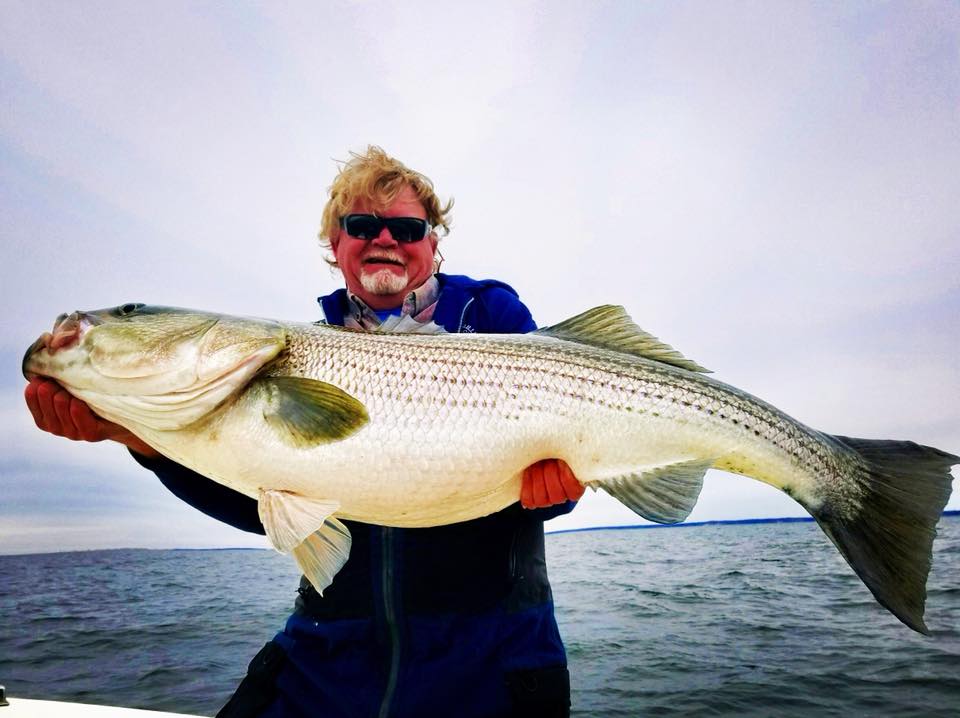 4. Document Your Experiences – In my opinion, real value in fishing comes from the memories we make on the water. Unfortunately, it’s easy to forget many of the intriguing things we discover. That’s where documentation comes in. I learned to document my fishing trips from my dad and I hold fondly to some of his old fishing journals. When I first moved here in 2006, I started a blog. My first post was about pulling into my driveway at the end of Shore Acres Road in Broadneck on a foggy January night and looking out on the Chesapeake Bay with enthusiastic anticipation. With more than a decade behind me, I still have a lot to learn but I’m sure glad I started that blog because I can go back now and relive some of my earliest experiences. If you aren’t into writing, consider video. We live in a time when anyone can make a video and upload it to the internet. A video blog is a great way to document your fishing experiences and share them with others. My YouTube channel includes fishing tips, short instructional flicks, and documentation of some memorable outings. Here’s a recent video of some huge fish we caught on light tackle just south of Poplar Island a few weeks ago.
4. Document Your Experiences – In my opinion, real value in fishing comes from the memories we make on the water. Unfortunately, it’s easy to forget many of the intriguing things we discover. That’s where documentation comes in. I learned to document my fishing trips from my dad and I hold fondly to some of his old fishing journals. When I first moved here in 2006, I started a blog. My first post was about pulling into my driveway at the end of Shore Acres Road in Broadneck on a foggy January night and looking out on the Chesapeake Bay with enthusiastic anticipation. With more than a decade behind me, I still have a lot to learn but I’m sure glad I started that blog because I can go back now and relive some of my earliest experiences. If you aren’t into writing, consider video. We live in a time when anyone can make a video and upload it to the internet. A video blog is a great way to document your fishing experiences and share them with others. My YouTube channel includes fishing tips, short instructional flicks, and documentation of some memorable outings. Here’s a recent video of some huge fish we caught on light tackle just south of Poplar Island a few weeks ago.
5. Make a Difference – 2018 would be a great time to join a conservation group like CCA Maryland, or to participate in efforts to preserve and improve the region where we live and play. This is where the environmental groups come in. It’s simple, if we don’t have clean water, we won’t have fish. In 2017, I was elected to the board of the Alliance for the Chesapeake Bay, an organization commissioned to lead, support, and inspire local  action to restore and protect the lands, rivers, and streams of the Chesapeake watershed. I’m very excited about the opportunities and responsibilities that come with my position. The strength of the Alliance is that it empowers groups and individuals to take action by providing access to new or existing resources. Would you like to restore a creek in your neighborhood? The Alliance can help. Start a water-quality testing program for your local stream? Give us a call. Plant some trees around your property? Drop us a line. Improve your yard so that there is less storm-water runoff and more native plants? We’ll show you how. When you resolve to take individual action, you’ll be amazed at the resources that are available and the people who want to help. The bottom line is that it all starts with you. Take the first step with an idea coupled with the resolve to make it happen, then contact me so I can point you in the right direction. You can also look me up at any of my upcoming seminars. My schedule is listed below. I don’t know a single angler who doesn’t have “Be a better fisherman” on their list of New Year’s resolutions. Let’s start by being bigger difference makers in 2018.
action to restore and protect the lands, rivers, and streams of the Chesapeake watershed. I’m very excited about the opportunities and responsibilities that come with my position. The strength of the Alliance is that it empowers groups and individuals to take action by providing access to new or existing resources. Would you like to restore a creek in your neighborhood? The Alliance can help. Start a water-quality testing program for your local stream? Give us a call. Plant some trees around your property? Drop us a line. Improve your yard so that there is less storm-water runoff and more native plants? We’ll show you how. When you resolve to take individual action, you’ll be amazed at the resources that are available and the people who want to help. The bottom line is that it all starts with you. Take the first step with an idea coupled with the resolve to make it happen, then contact me so I can point you in the right direction. You can also look me up at any of my upcoming seminars. My schedule is listed below. I don’t know a single angler who doesn’t have “Be a better fisherman” on their list of New Year’s resolutions. Let’s start by being bigger difference makers in 2018.
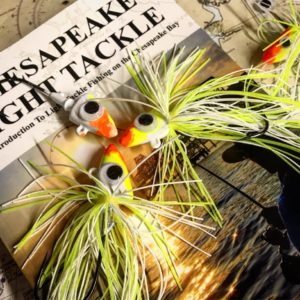 Have you noticed all the creativity in lure making for Chesapeake Bay rockfish lately? The artistry that is going into decorating the lead jig heads that we use while fishing with light tackle is simply amazing. I’m a big fan of the lures these guys and girls are turning out. I was going through some old papers last week when I happened upon the documents I used in 2008 to file for a trademark on the name “Candy Corn Jigs.” It wasn’t a big deal. My thinking was that someday I might want to make and sell lures and it seemed like a cool name for my favorite combination of colors for catching rockfish. That got me thinking about the history of color-contrasting lures and how far we’ve come in the last ten years. In fishing, as with many things, you can get a better understanding of where we’re going when you look back at where we’ve been. Believe it or not, in 2009 you could get a pretty good argument about whether rockfish jigs should even be painted. One light tackle guide from Southern Maryland was fond of saying, “When people ask me what my favorite color is for jig heads, I say lead.” If jigs were painted at all, they were usually only one single color: either red, chartreuse, or white. Fast forward to almost 2018, and we’re seeing all manner of colors and color combinations on the jig heads we use to catch rockfish with light tackle on the Bay. I think we’re all better anglers for it. Read More!
Have you noticed all the creativity in lure making for Chesapeake Bay rockfish lately? The artistry that is going into decorating the lead jig heads that we use while fishing with light tackle is simply amazing. I’m a big fan of the lures these guys and girls are turning out. I was going through some old papers last week when I happened upon the documents I used in 2008 to file for a trademark on the name “Candy Corn Jigs.” It wasn’t a big deal. My thinking was that someday I might want to make and sell lures and it seemed like a cool name for my favorite combination of colors for catching rockfish. That got me thinking about the history of color-contrasting lures and how far we’ve come in the last ten years. In fishing, as with many things, you can get a better understanding of where we’re going when you look back at where we’ve been. Believe it or not, in 2009 you could get a pretty good argument about whether rockfish jigs should even be painted. One light tackle guide from Southern Maryland was fond of saying, “When people ask me what my favorite color is for jig heads, I say lead.” If jigs were painted at all, they were usually only one single color: either red, chartreuse, or white. Fast forward to almost 2018, and we’re seeing all manner of colors and color combinations on the jig heads we use to catch rockfish with light tackle on the Bay. I think we’re all better anglers for it. Read More!
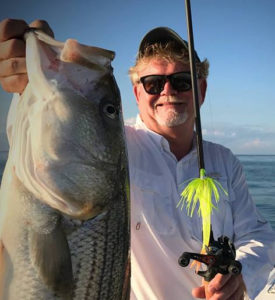 By now, you’ve probably noticed that many Chesapeake Bay light tackle anglers are using skirted jig heads when they fish with soft plastic lures. Jigs with silicone skirts are becoming extremely popular in the Mid-Atlantic region and there’s no doubt that they make deadly baits for big striped bass. A skirt on a lead jig head with a soft-plastic bait increases action and creates a wider profile in the water. Skirts also provide color and contrast, two essential big-fish strike triggers.
By now, you’ve probably noticed that many Chesapeake Bay light tackle anglers are using skirted jig heads when they fish with soft plastic lures. Jigs with silicone skirts are becoming extremely popular in the Mid-Atlantic region and there’s no doubt that they make deadly baits for big striped bass. A skirt on a lead jig head with a soft-plastic bait increases action and creates a wider profile in the water. Skirts also provide color and contrast, two essential big-fish strike triggers.
Skirts on lures aren’t anything new. They got their start in the mid 1920s in Akron, Ohio where Fred Arbogast worked for the Goodyear Tire and Rubber Company. He and his fishing buddies experimented with slicing thin rubber sheets into narrow strips and attaching them to their spinning lures. They caught fish. After Arbogast won several fishing competitions, he took out an ad in the June, 1926 edition of The Hunting & Fishing Magazine. His lures caught on quickly so Fred quit his job at Goodyear to form the Arbogast Lure Company. Read More!



